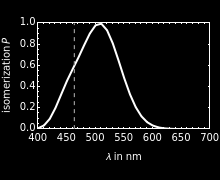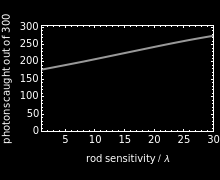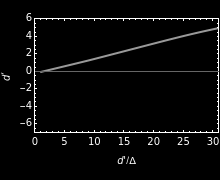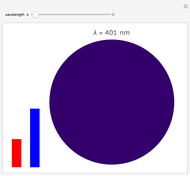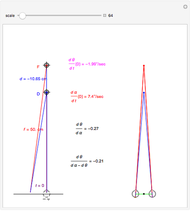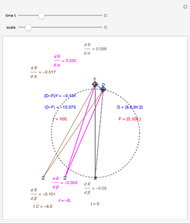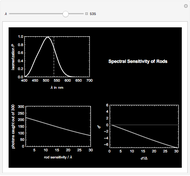Spectral Sensitivity of Rods in Human Retina

Requires a Wolfram Notebook System
Interact on desktop, mobile and cloud with the free Wolfram Player or other Wolfram Language products.
There are two types of photoreceptors in the human retina. Cones, which are responsible for color vision, are most sensitive to green, red, and blue. Rods are "color blind", but are sensitive to light changes. Rods detect light by isomerization of the rhodopsin molecules they contain. More specifically, rods absorb light (photons), thus energizing and changing the shape of these molecules. While rods do not mediate color vision, isomerization is neither constant nor a monotonic function of the light emission wavelength  . Experimental studies have shown that rods are most sensitive to wavelengths of light around 498 nm (green-blue) and insensitive to wavelengths longer than about 640 nm (red).
. Experimental studies have shown that rods are most sensitive to wavelengths of light around 498 nm (green-blue) and insensitive to wavelengths longer than about 640 nm (red).
Contributed by: Louis-Alexandre Etezad-Heydari (November 2011)
Open content licensed under CC BY-NC-SA
Snapshots
Details
Top-left figure: interpolated rod spectral sensitivity
Bottom-left figure: A simulation of isomerization and detection of rods as a function of light wavelength  ranging from 401 to 571 nm, with
ranging from 401 to 571 nm, with  ranging from 1 to 30 nm in unit steps. The expected photon catch (middle plot) is expressed as
ranging from 1 to 30 nm in unit steps. The expected photon catch (middle plot) is expressed as  , where
, where  is the sensitivity for a rod at wavelength
is the sensitivity for a rod at wavelength  . Intensity
. Intensity  was fixed at 300 for the purpose of our experiment.
was fixed at 300 for the purpose of our experiment.
Bottom-right figure: Within a signal detection theory framework, we analyzed discrimination as a function of  in the right-most figure. The sensitivity
in the right-most figure. The sensitivity  shown was computed using
shown was computed using  , where
, where  is the variability in photon absorption set at 20.0.
is the variability in photon absorption set at 20.0.
Permanent Citation
